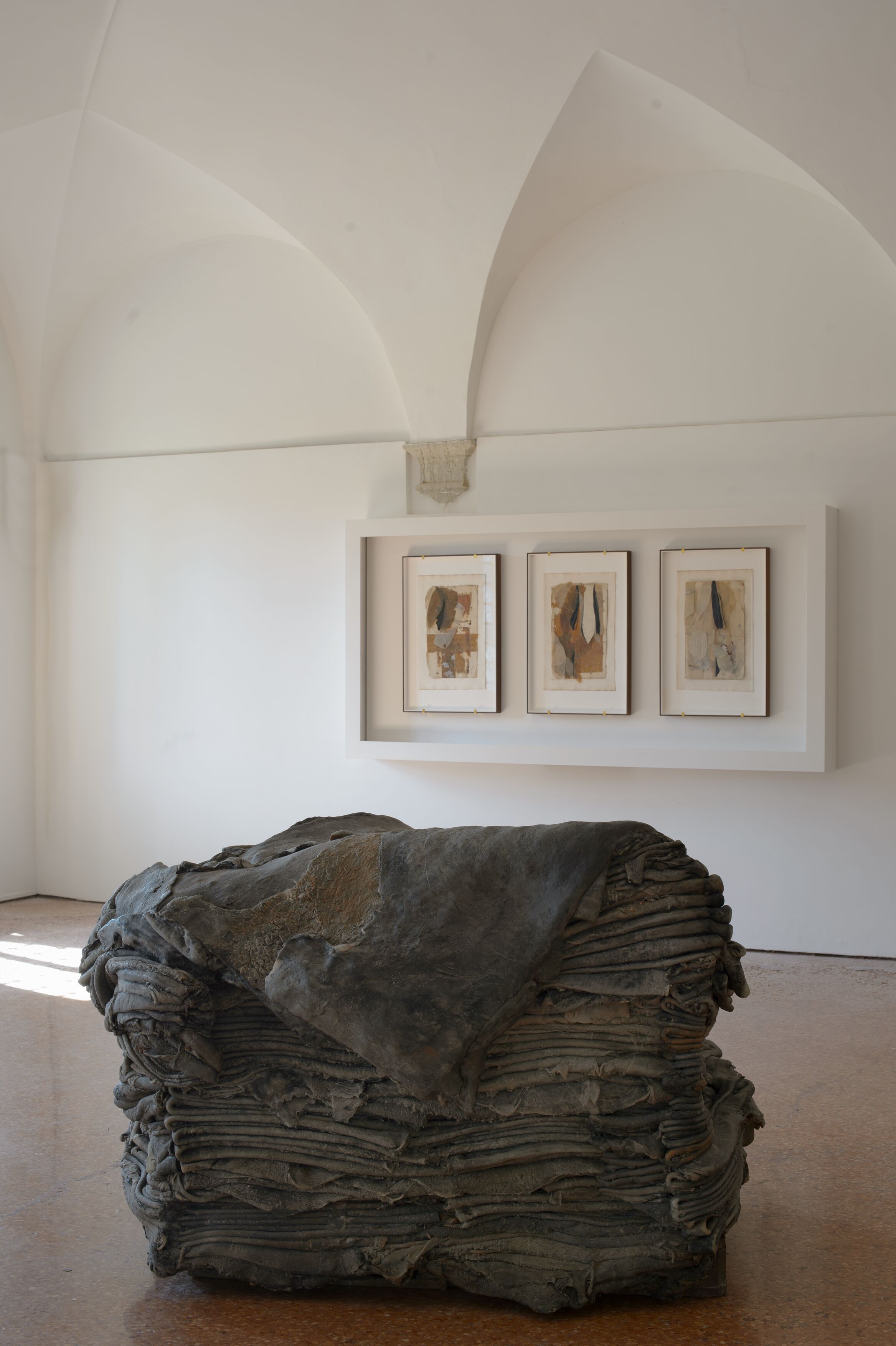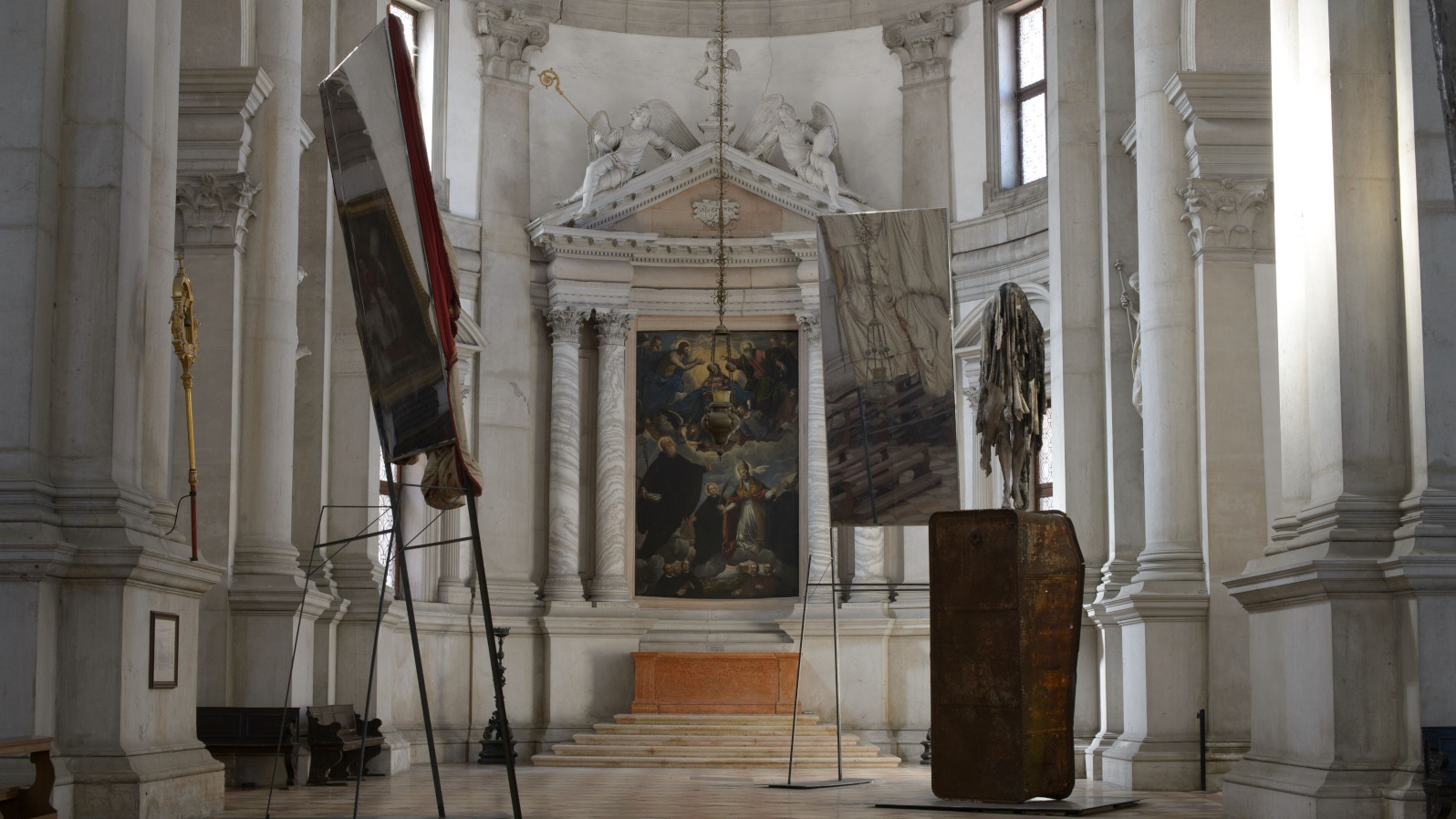
Belgian artist Berlinde De Bruyckere has visited Venice numerous times in the past and exhibited her work during different editions of the biennale. She also represented Belgium in 2013, with an installation of a gargantuan fallen cripple wood tree (a species known and named for its twisted branches).
An architectural characteristic the artist has long found interesting about the city is hidden in the details. ‘During my walks around Venice, I have always been intrigued by how the walls are full of water and show the wounds caused by this containment,’ De Bruyckere tells Wallpaper*. For her Belgian Pavilion installation, she had marked those wall wounds inside the space by scratching them onto the canvas.
Now De Bruyckere is back in Venice with a solo exhibition, ‘City of Refuge III’, at Abbazia di San Giorgio Maggiore, in which she turns her eye to light, a phenomenon that perhaps has a certain rhyme in Venice, unlike in any other city. After observing the 16th-century, Renaissance-style church, designed by Andrea Palladio, from day to night, she was fascinated by the building’s construction, which allows the sunlight’s travel throughout the day.
‘Berlinde De Bruyckere. City of Refuge III’ in Venice
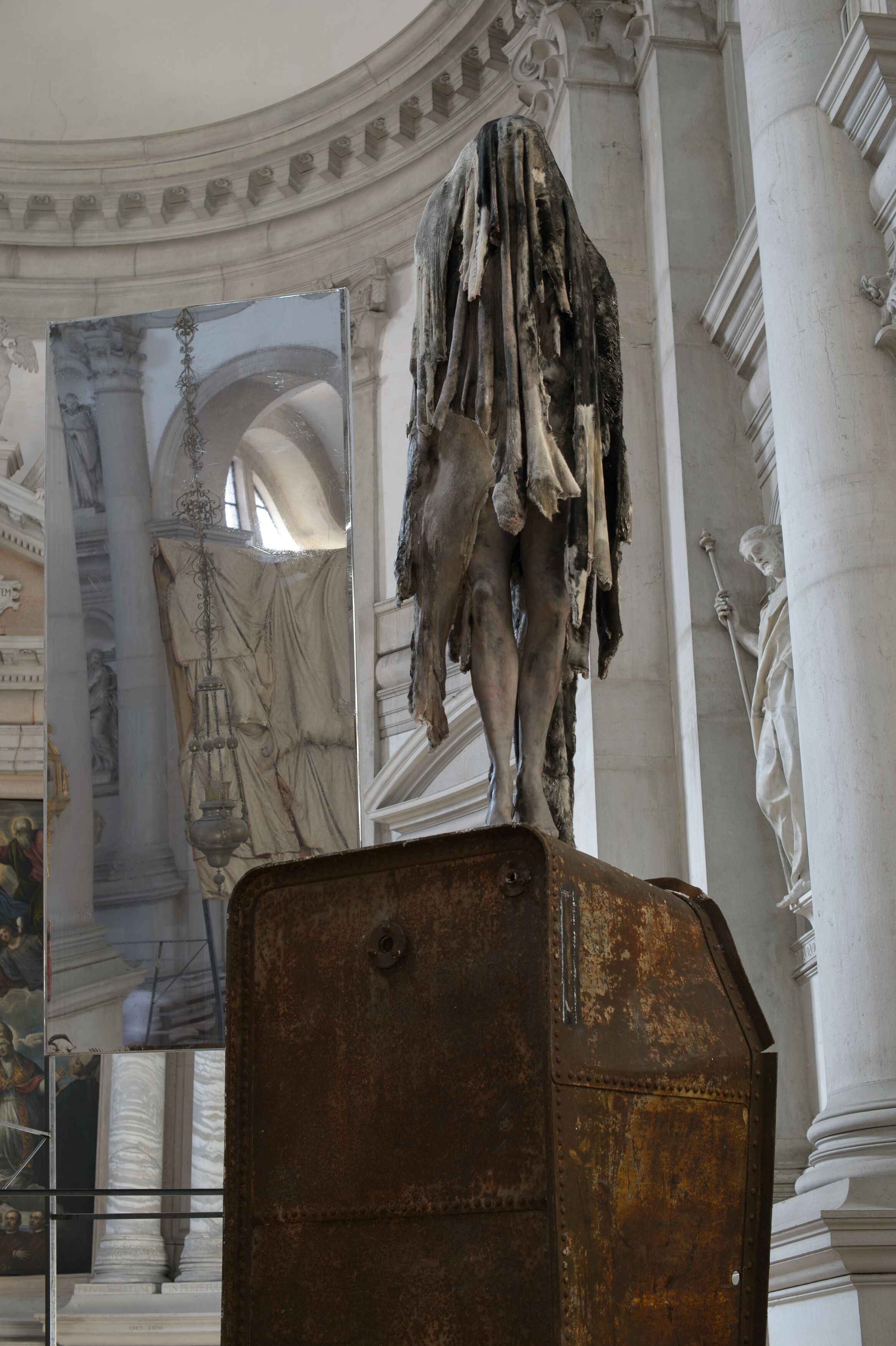
De Bruyckere’s response is an installation of recent sculptures – most prominently her newest Arcangeli – which speak to the church’s interior characteristic that puts forward notions of devotion, transcendence, and mortality. Given the artist’s long-term interest in incorporeality in sculpture, the installation blends her contemporary exploration of spirituality with the venue’s Benedictine embodiment.
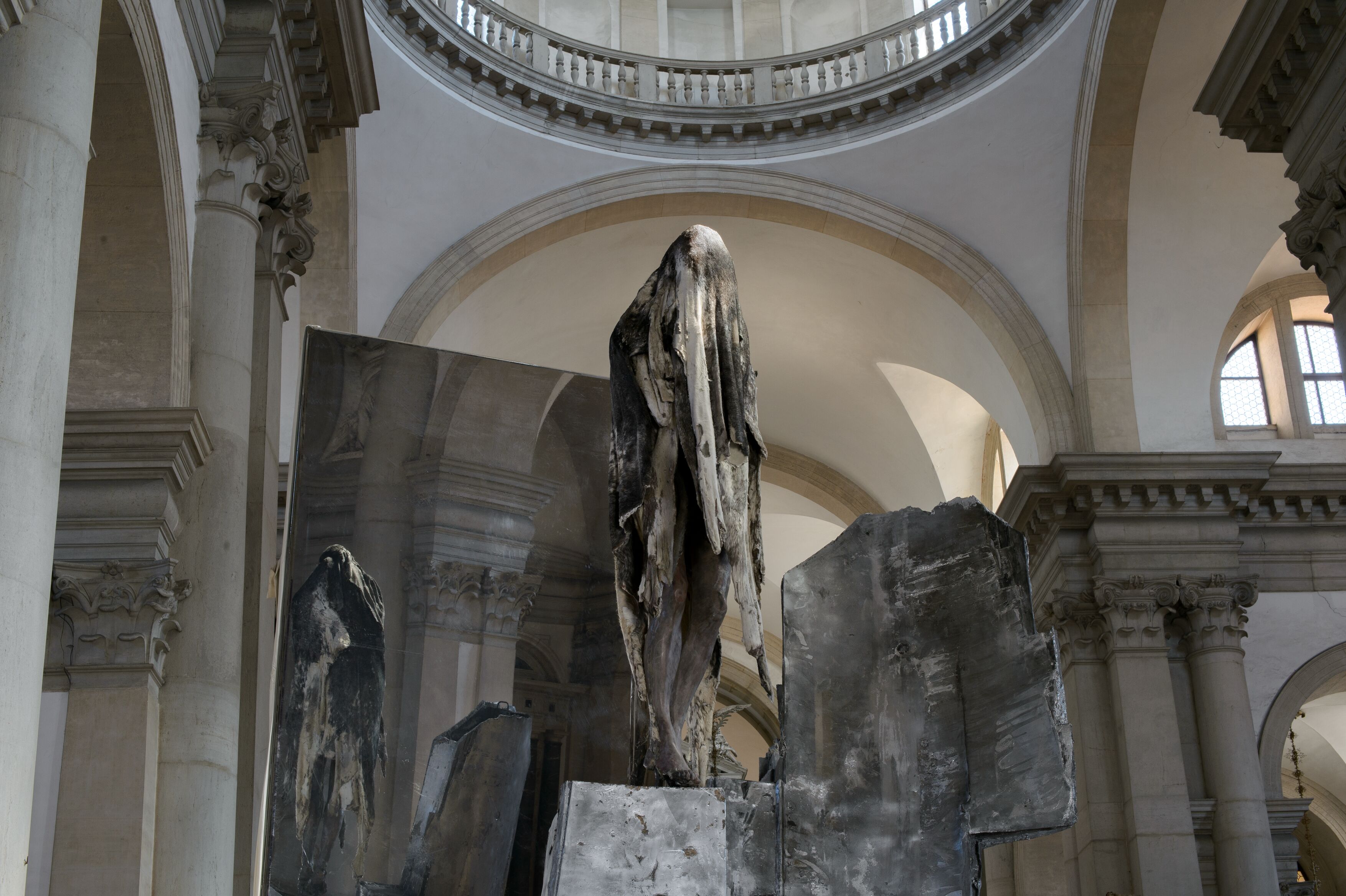
The show’s protagonists are angels without faces: they are shrouded by massive cloths that cover almost their entire bodies, including their wings. Believed to be the servants and messengers of God, the archangel figure (also featured in De Bruyckere’s 2023 show at Hauser & Wirth Zurich) entered the artist’s repertoire during the early days of the pandemic, when she was in search of a mythical figure. She came across Giorgione’s painting Cristo morto sorretto da due angeli (1502-1510), which shows an angel wrapping his arms around a tormented Christ, reminding the artist of the solidarity she witnessed among patients and caregivers.
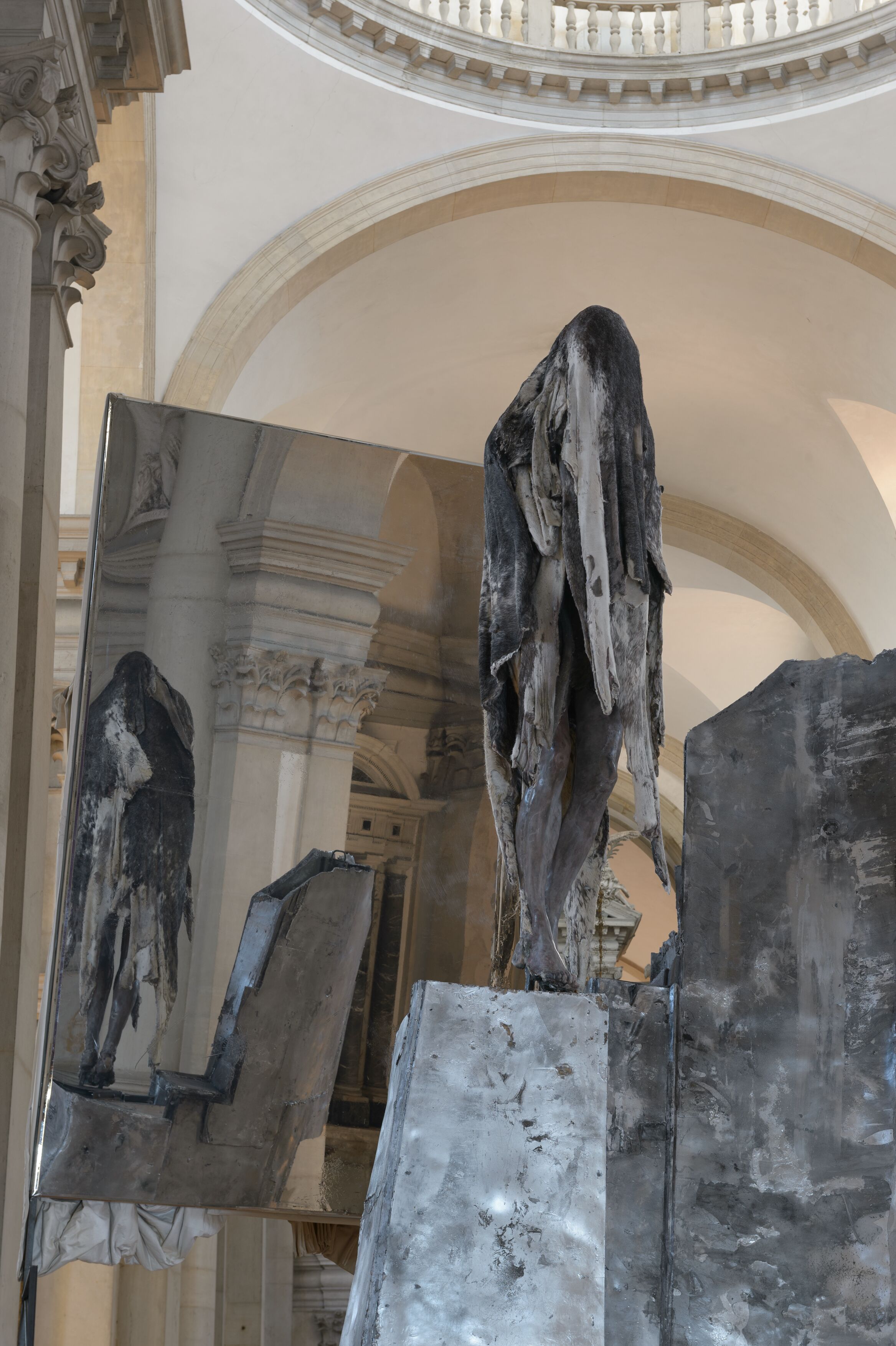
In De Bruyckere’s interpretation, the archangels are devoid of the freedom to fully spread their wings, buried under the heavy cloth. A pair of lanky legs are their only visible human-like traits, holding a posture of a landing or an ascent, with their toes just touching the pedestals they stand on.
They defy gravity while radiating a marble heft inherent to classical Italian sculptures – they tower over the viewer, similar to interpretations of the crucifix. De Bruyckere’s material palette, however, veers her away from any depiction of David on the pedestal or Jesus on a cross. Wax, instead, gives the archangels a humanlike thickened softness, as well as a spectral transparency – they convey a sheen with the light beaming through the windows.
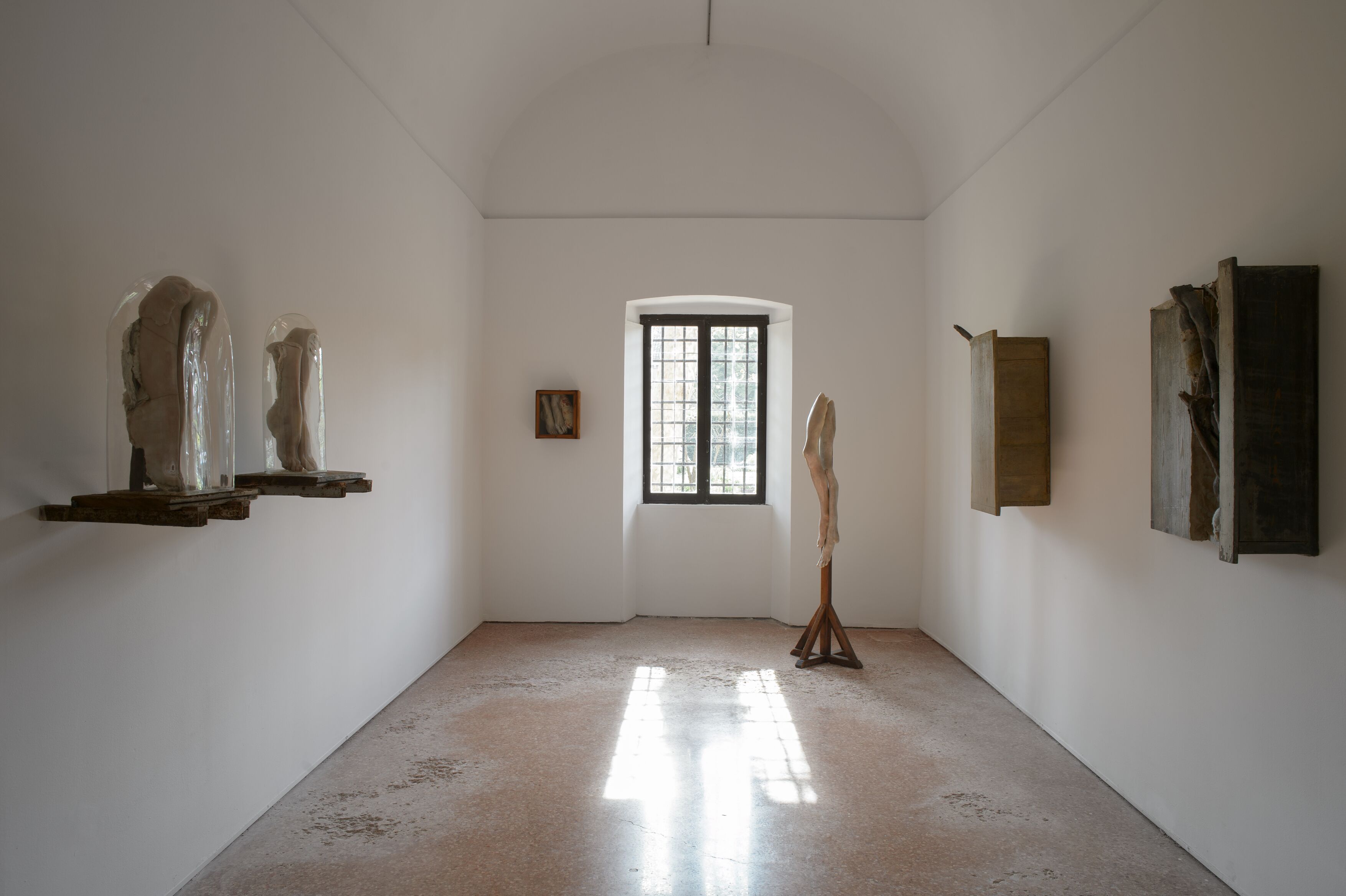
At her Ghent studio, the artist works with a live model to cast the body, which she later enlarges by around ten per cent to maximise the figure’s otherworldly grandiosity. She uses a cow-skin mould for the shroud, which holds the possibility of translating the animal hair into the final work. The grainy sepia hues are a result of what she calls ‘a big surprise when I take out the mould and see the colours underneath’.
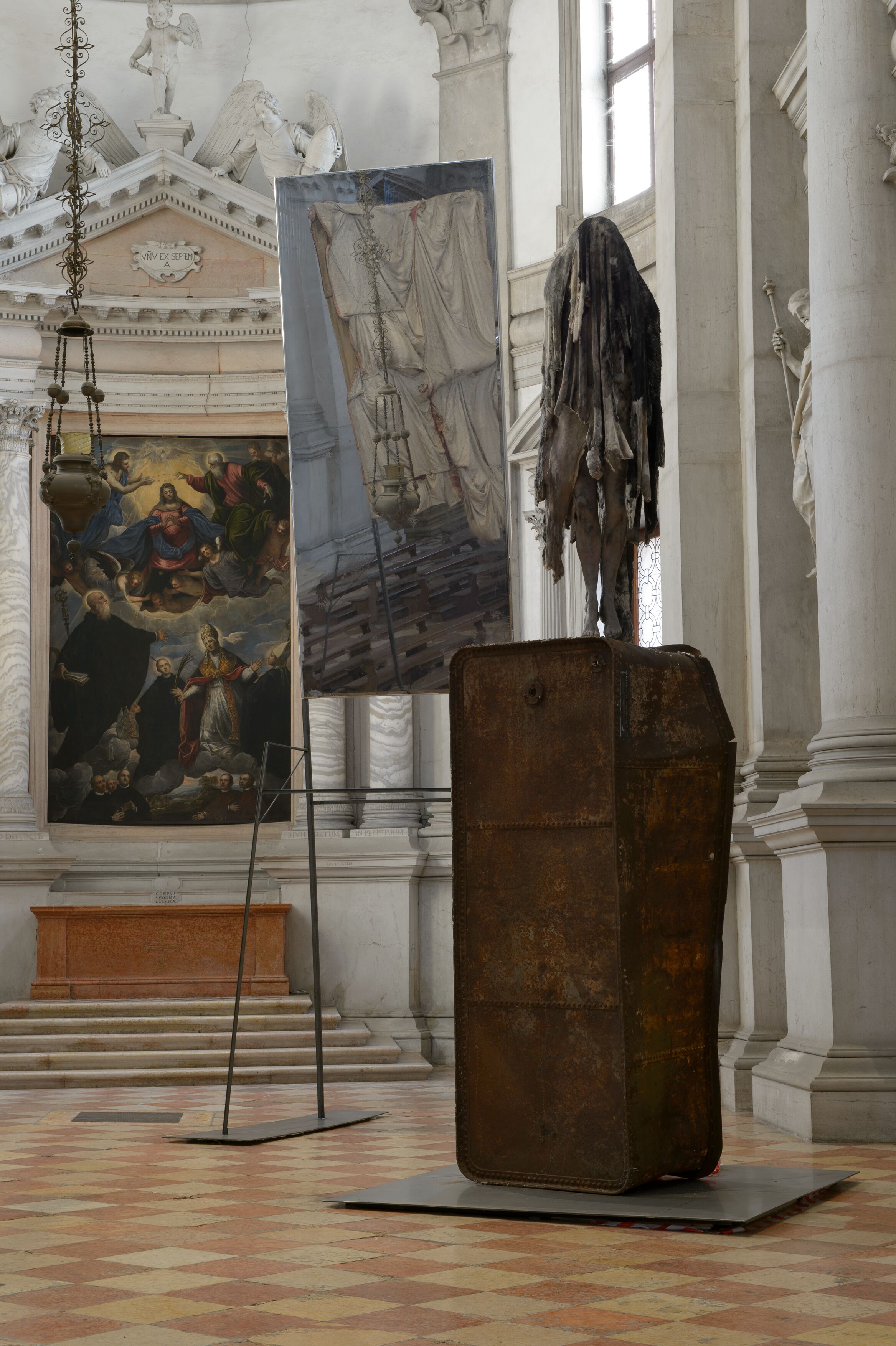
De Bruyckere’s collaboration with light continues with a configuration of mirrors that echo the archangels with broken reflections. The mirrors, which she uses for the first time in her career, are hung on antique curtains that backdrop the sculptures. Draped similarly to mammoth theatre curtains, the mirrored fabric ‘adds a sense of multitude of reality’, according to the artist, who also had to adapt a new form of domination in space. ‘I usually study a space before exhibiting there and make it mine with my installation,’ she says. ‘I had to find my place in the space without overwhelming it,’ she adds about operating in a consecrated church where people still come for worship in the company of numerous paintings, including five by Tintoretto.
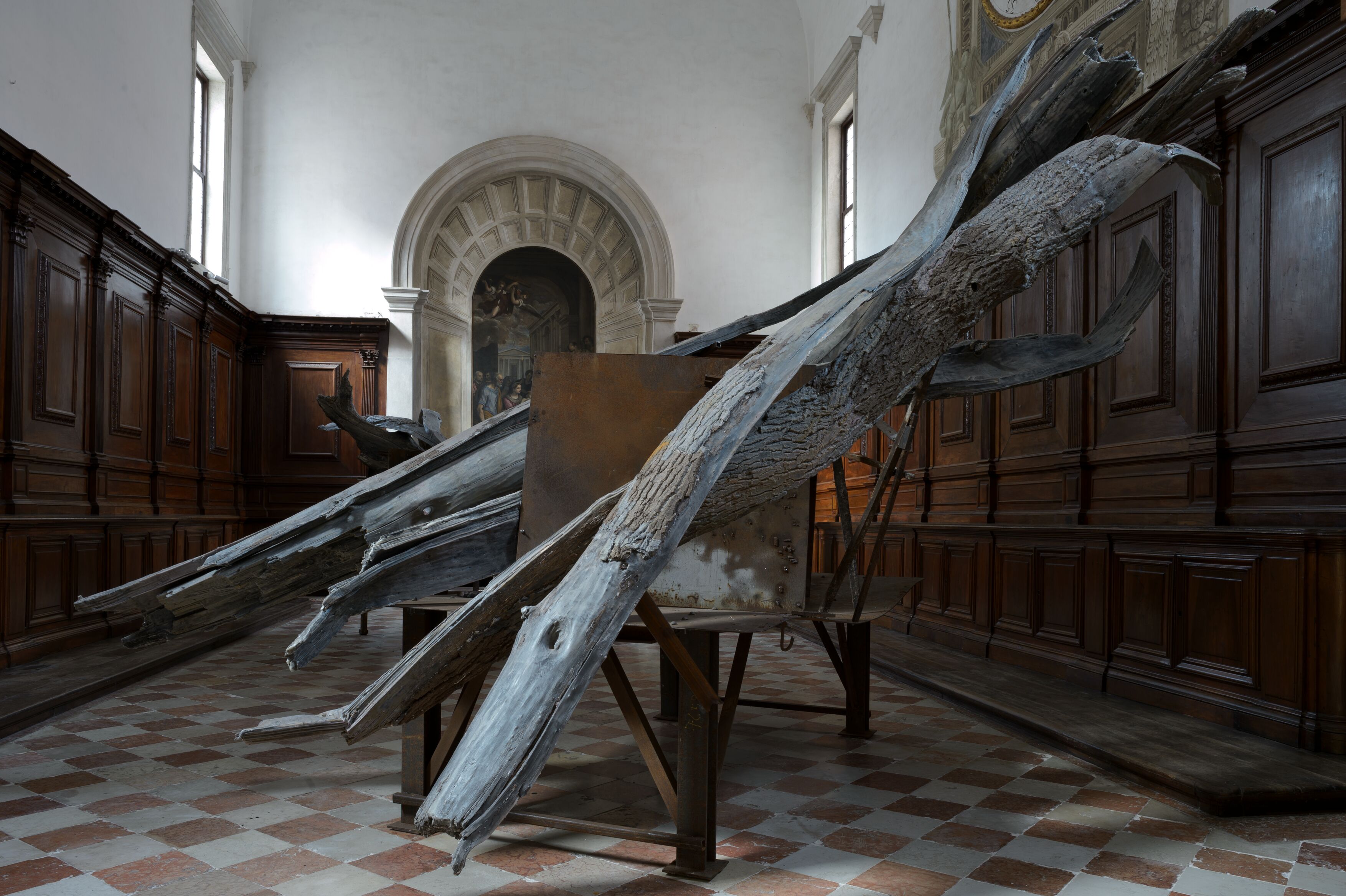
At the sacristy, De Bruyckere salutes one of her fundamental subjects, the fallen cripple wood tree, in this case, cast from a tree she found split by lightning near her studio. Between a glorious defeat and an eerie stillness, the monstrous trees with crippling branches in wax rest on welding tables that in the artist’s words, ‘reference the heavy construction materials I came across at Venice harbours – they are rusty and brutal’. By pairing the wax’s lingering tactility with metal coldness, she monumentalises the catastrophic moment of a fall with a potential for new life: ‘There is a sense of resurrection, an element of mortality that is already a part of the environment.’
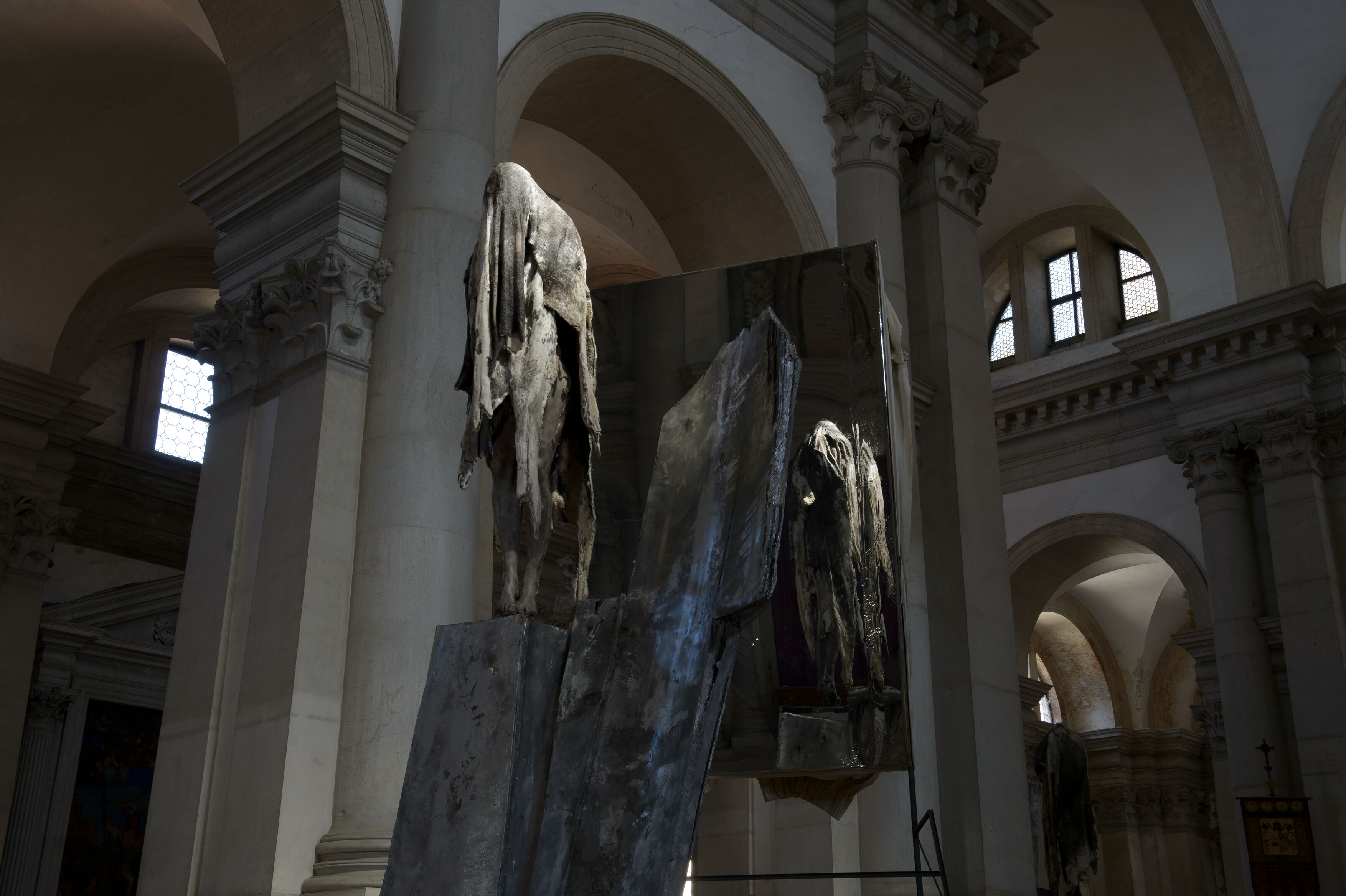
‘Berlinde De Bruyckere. City of Refuge III’ is at Abbazia di San Giorgio Maggiore, Venice, 20 April – 24 November 2024 and is a Collateral Event of the 60th International Art Exhibition – La Biennale di Venezia. More about the artist at hauserandwirth.com
For more to see in the city, read our Venice Biennale 2024 guide
